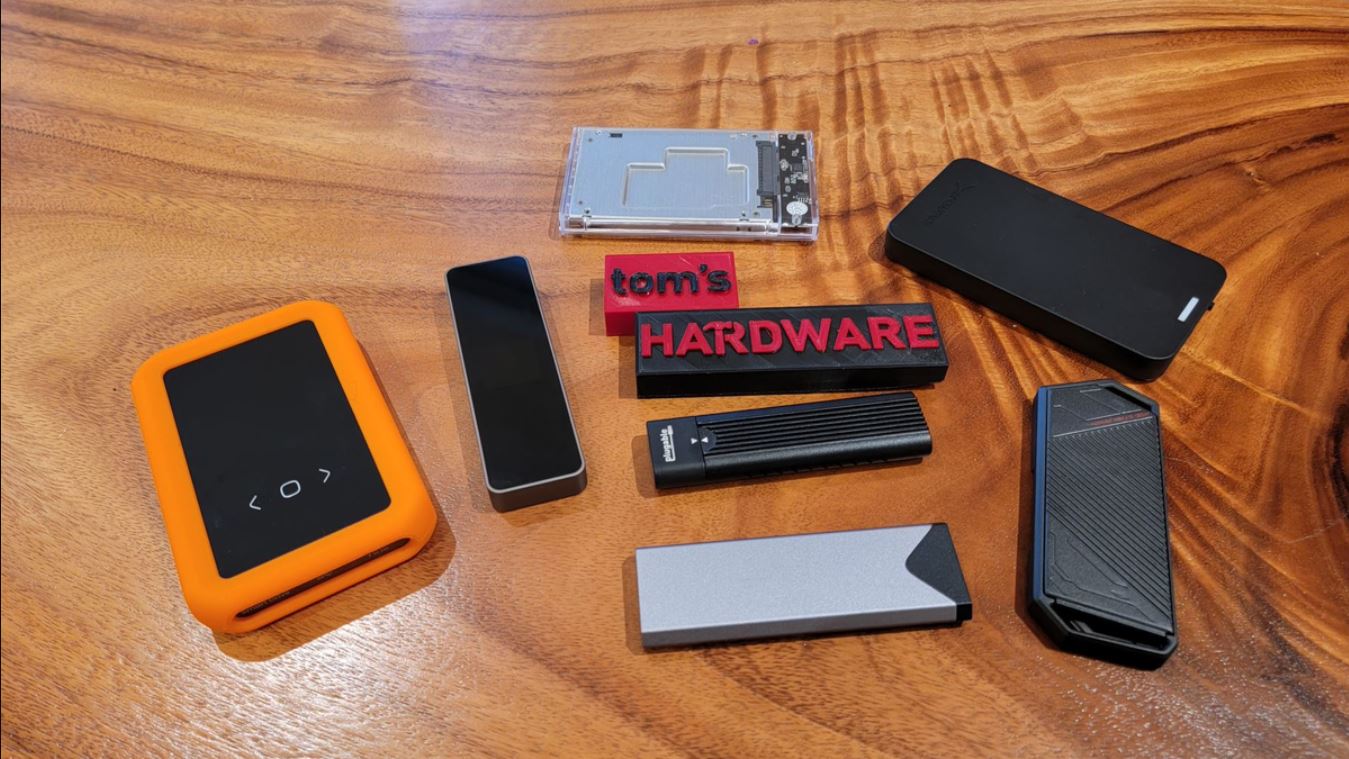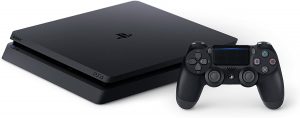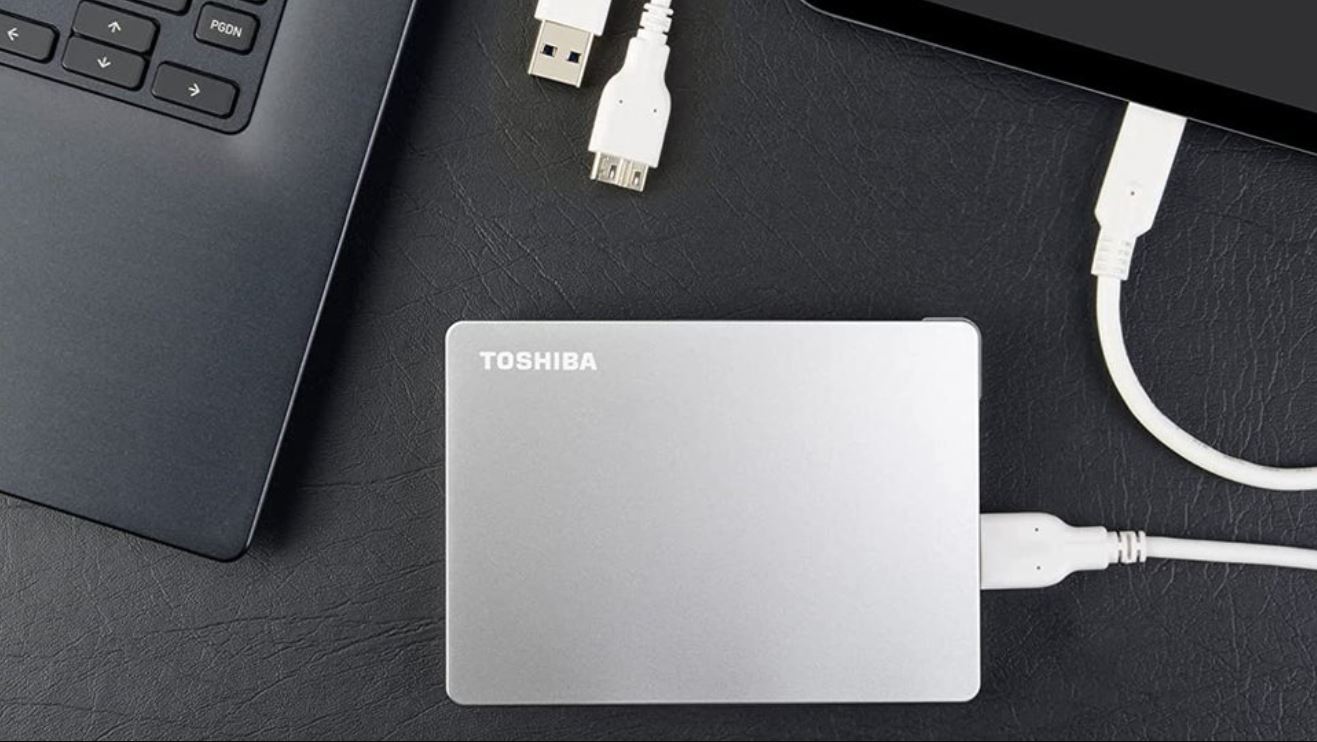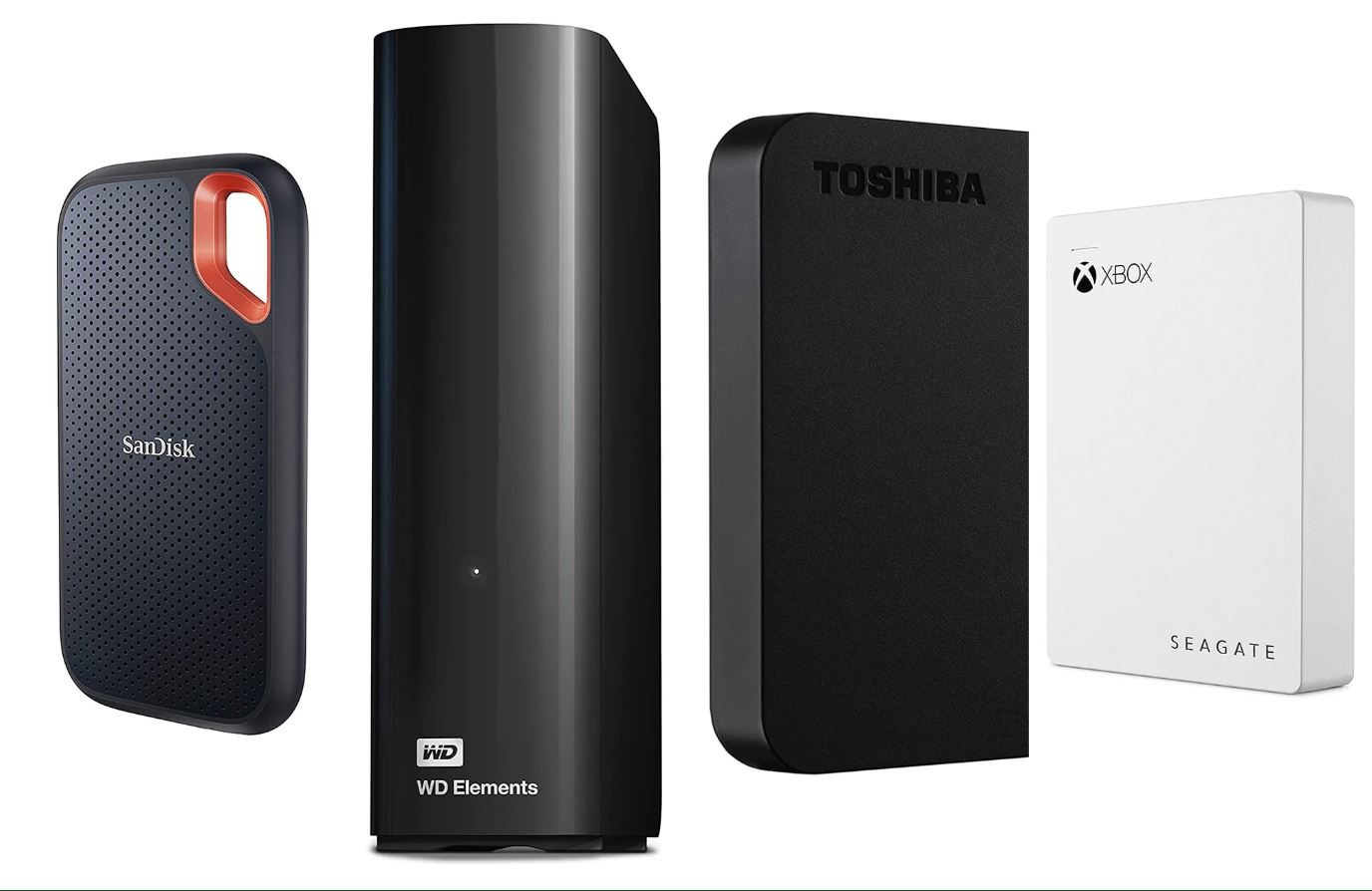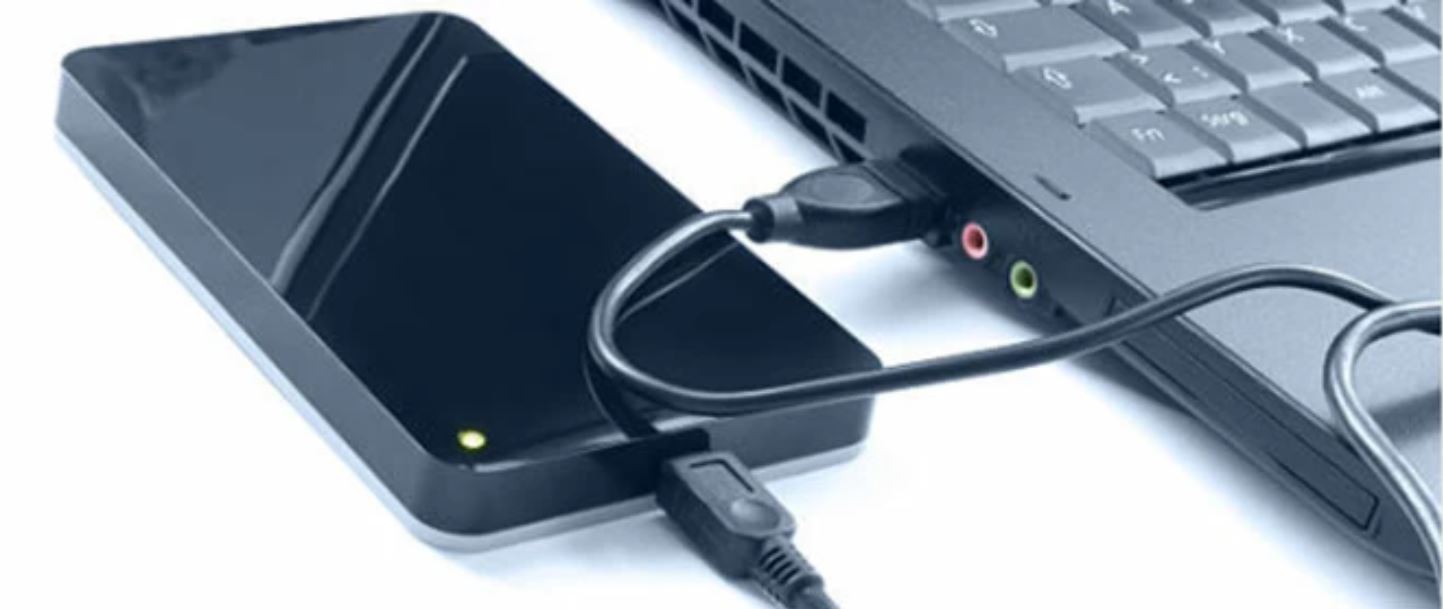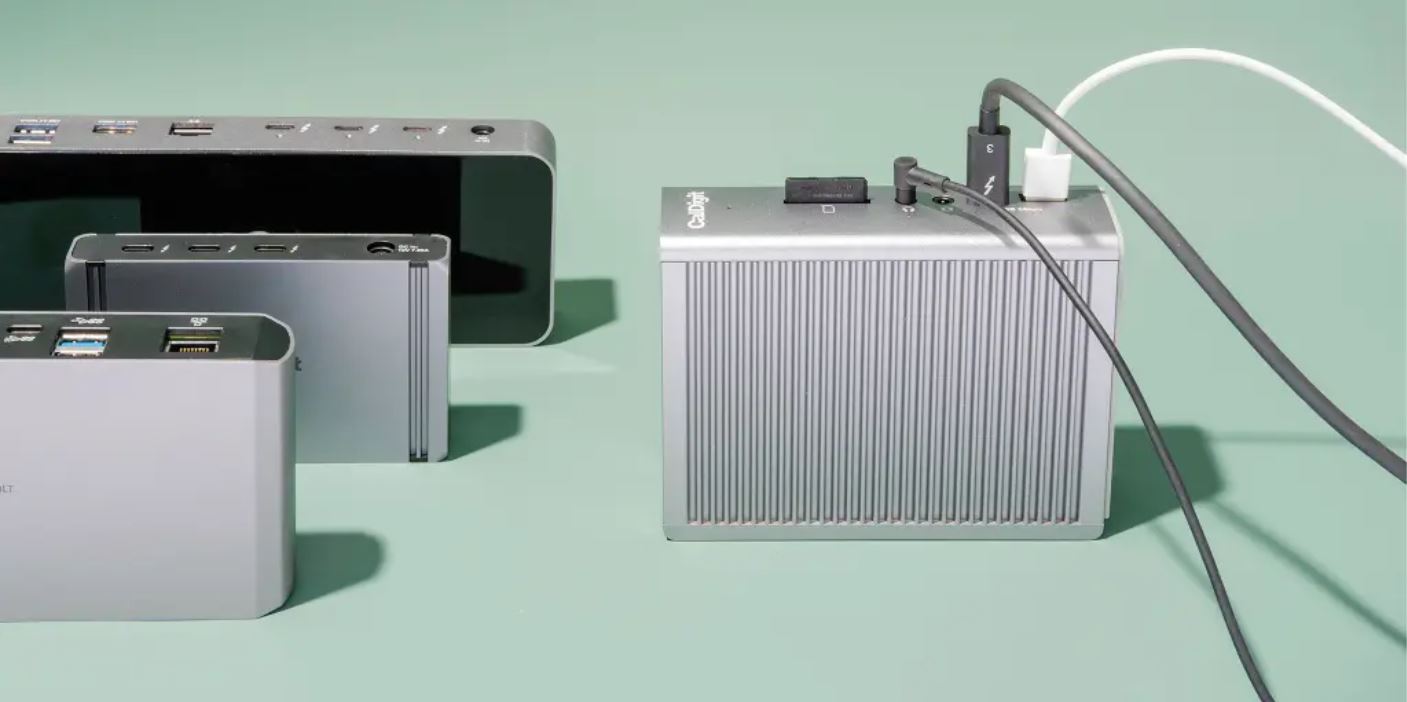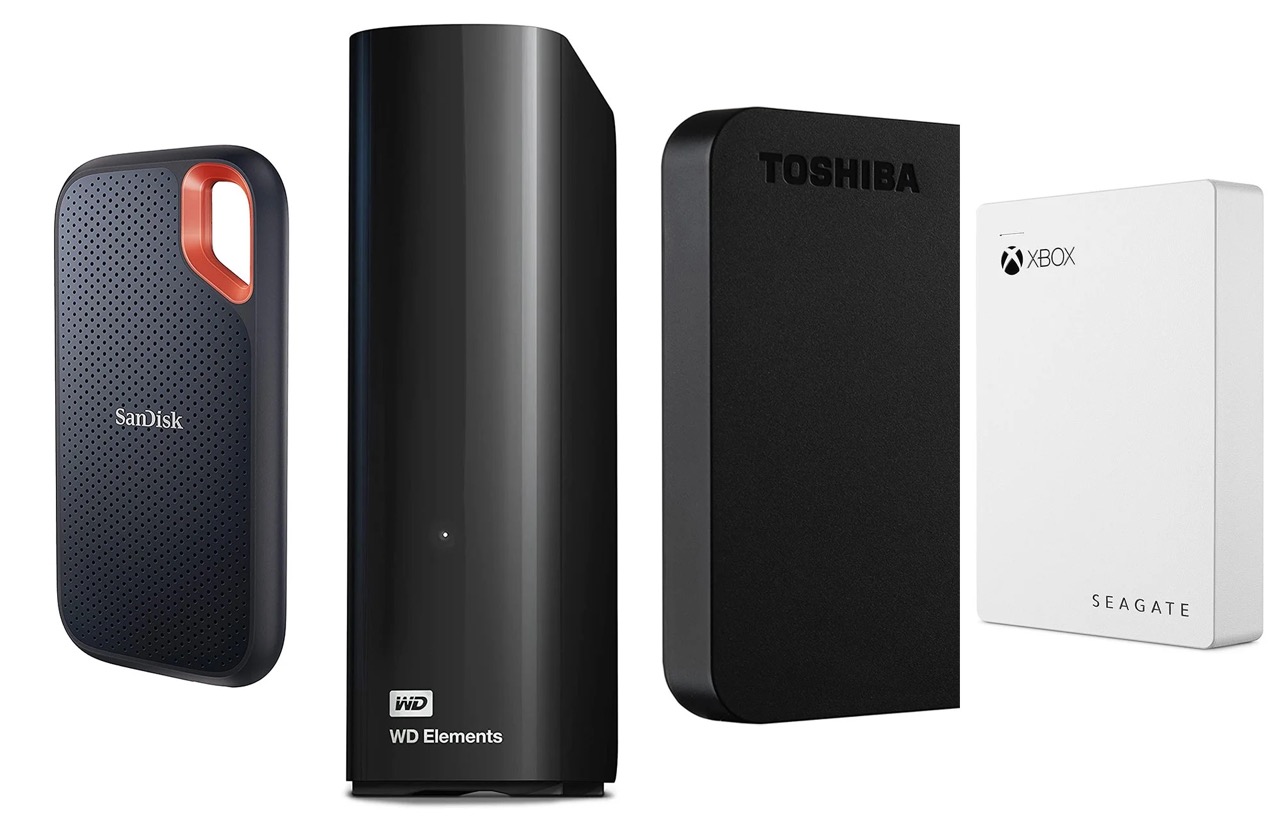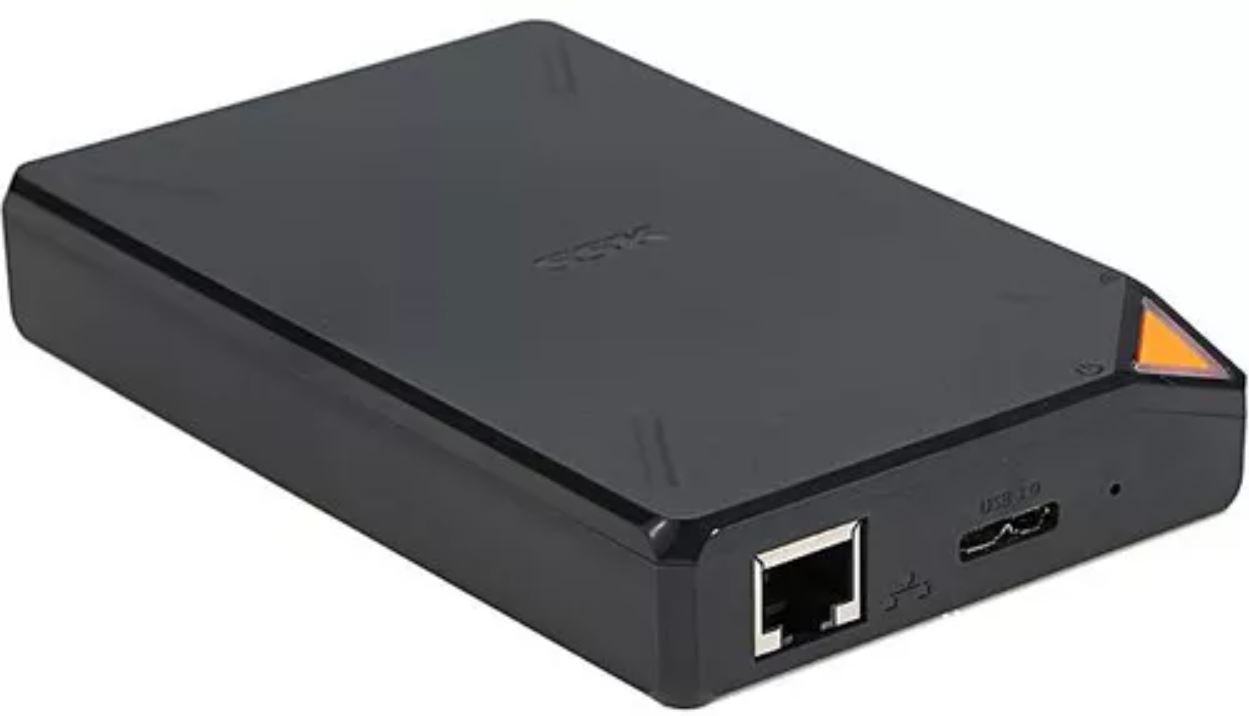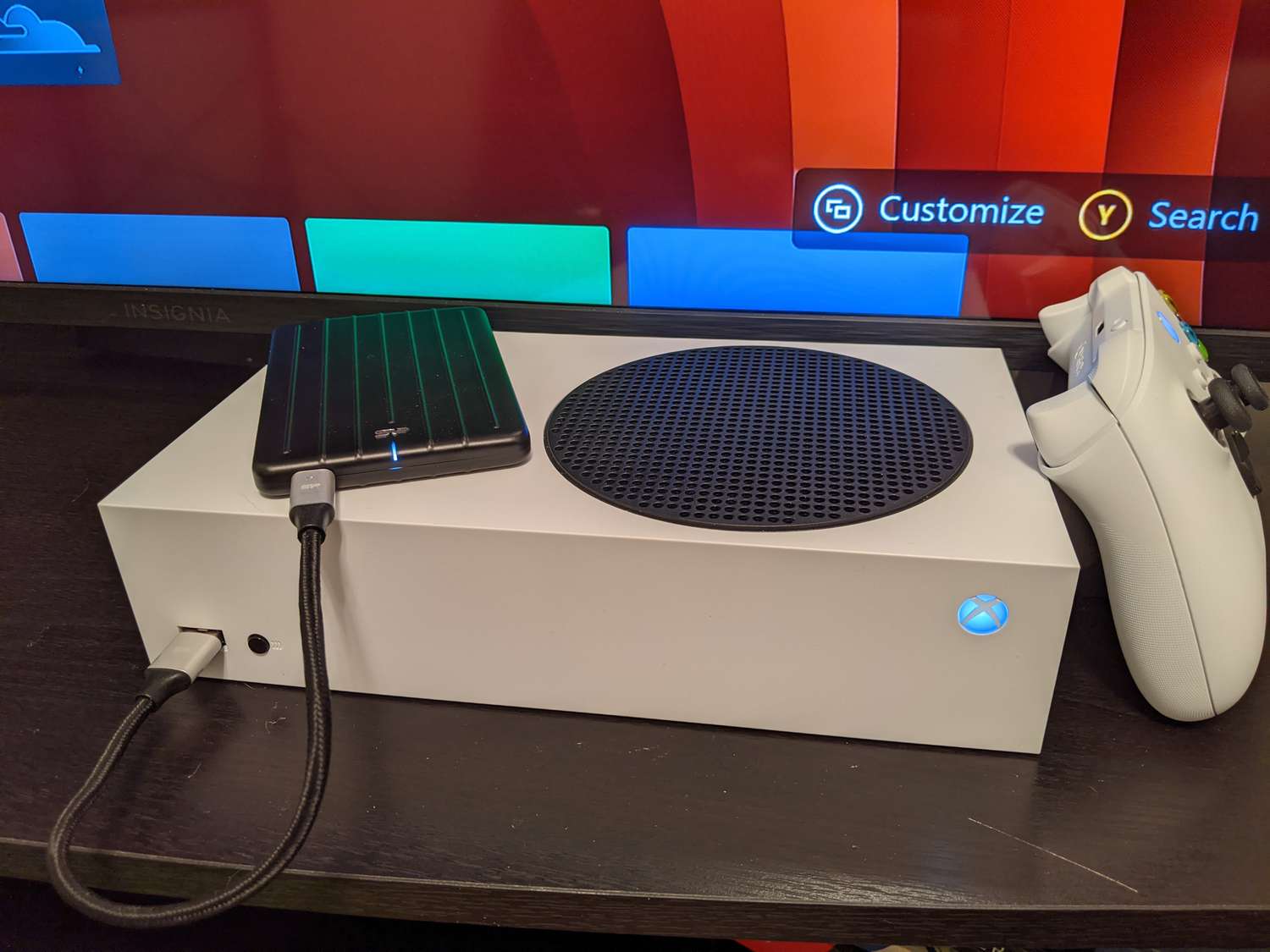Introduction
Welcome to the world of external hard drives! Whether you’re a student, a professional, or a tech enthusiast, having an external hard drive has become increasingly important in our digital lives. These portable devices offer additional storage space for backing up important files, storing media, and expanding the capacity of our computers.
As we rely more and more on these devices, it’s crucial to consider their power consumption. Understanding how much power an external hard drive uses can help us make informed decisions about energy efficiency, compatibility, and overall usage. In this article, we will delve into the various factors that influence the power consumption of external hard drives, as well as provide insights into the power requirements of different types of drives.
By understanding the power consumption of external hard drives, we can not only optimize our energy usage, but also ensure their compatibility with our systems. This knowledge can also assist in choosing the right external hard drive for our specific needs, be it for professional use, multimedia storage, or simply for keeping personal files safe and secure.
Additionally, we will discuss ways to reduce power consumption and highlight energy-efficient options available in the market. This can contribute not only to cost savings but also help reduce our environmental impact. So, let’s dive in and explore the fascinating world of external hard drive power consumption!
Understanding Power Consumption
Power consumption refers to the amount of electrical energy consumed by a device. When it comes to external hard drives, power consumption is an important aspect to consider as it affects various aspects of its performance, compatibility, and portability.
The power consumption of an external hard drive is measured in watts (W). It determines the amount of power required to operate the drive and can vary depending on several factors, including its design, storage capacity, and usage patterns.
External hard drives typically consist of mechanical and electronic components that consume power. The mechanical components, such as the spinning disk and the read/write head, require a certain amount of energy to function and access data. The electronic components, including the controller and interface circuitry, also consume power to manage data transfer and communication.
It’s important to note that power consumption can vary depending on the activity of the external hard drive. For example, when the drive is idle or in standby mode, it consumes less power compared to when it is actively reading or writing data.
Moreover, power consumption can also vary between different models and brands of external hard drives. Some drives are designed with energy-saving features that prioritize power efficiency, while others may consume more power for enhanced performance or specialized functionalities.
Understanding the power consumption of an external hard drive is essential for several reasons. Firstly, it helps determine the power requirements of the drive and ensures compatibility with your computer or other devices. Secondly, it allows you to estimate the impact on your energy bills and make informed decisions regarding energy consumption.
Additionally, being aware of power consumption can help you choose the right external hard drive based on your intended usage. For instance, if you plan to use the drive for multimedia purposes, such as video editing or gaming, you may opt for a higher-powered drive to ensure smooth playback and performance.
In the next section, we will explore the various factors that can influence the power consumption of external hard drives and discuss how they impact overall energy efficiency and performance.
Factors Affecting Power Consumption
The power consumption of an external hard drive can be influenced by various factors. Understanding these factors can help you make informed decisions about energy efficiency and choose a drive that best suits your needs. Let’s take a look at some of the key factors that can affect power consumption:
Storage Capacity: The storage capacity of an external hard drive is one of the main factors that can impact power consumption. Typically, larger capacity drives require more power to operate compared to smaller capacity drives. This is because higher capacity drives often have multiple platters and require more energy to spin and access data.
Rotational Speed: The rotational speed of the drive, measured in revolutions per minute (RPM), can also affect power consumption. Drives with higher RPM generally consume more power because they need to spin the disk faster to read and write data. However, newer technologies such as solid-state drives (SSDs) have no moving parts and, therefore, consume less power.
Interface Type: The interface type of the external hard drive can influence power consumption. USB 2.0, USB 3.0, Thunderbolt, and eSATA are some common interface types. USB 3.0, for example, is generally more power-efficient compared to USB 2.0 due to its improved data transfer rate and lower power requirements.
Activity Level: The activity level of the external hard drive, whether it is idle, reading, or writing data, can significantly affect power consumption. When the drive is idle or in standby mode, it consumes less power compared to when it is actively accessing or transferring data. Some drives also have power-saving features that automatically put the drive to sleep when idle for a certain period, further conserving energy.
Design and Efficiency: The design and efficiency of the external hard drive itself can impact power consumption. Energy-efficient drives are designed to optimize power usage and reduce energy waste. Some drives may incorporate advanced power management features, such as low-power modes and intelligent power allocation, to deliver better energy efficiency.
Usage Patterns: How you use the external hard drive can also affect power consumption. For example, continuous and intensive usage, such as running heavy applications or transferring large files, may consume more power compared to occasional and light usage. Understanding your usage patterns can help you select a drive that aligns with your specific needs.
By considering these factors, you can make an informed choice when selecting an external hard drive that aligns with your requirements for power consumption, performance, and energy efficiency.
Types of External Hard Drives
External hard drives come in various types and configurations, each offering unique features and advantages. Understanding the different types can help you choose the most suitable option for your needs. Let’s explore some of the common types of external hard drives:
Traditional Hard Disk Drives (HDD): The traditional HDDs are the most common type of external hard drives available in the market. These drives store data on rotating magnetic platters and use a read/write head to access the data. HDDs offer high storage capacities at affordable prices, making them ideal for backing up large files and storing multimedia content. However, they tend to be larger, heavier, and consume more power compared to other types of drives.
Solid-State Drives (SSD): Solid-state drives have gained popularity in recent years due to their faster performance and durability. Unlike traditional HDDs, SSDs have no moving parts and use flash memory to store data. They offer faster access times, rapid file transfers, and reduced power consumption. SSDs are more compact, lightweight, and resistant to shock and vibration. However, they generally come at a higher price point compared to HDDs and offer lower storage capacities.
Hybrid Drives: Hybrid drives combine the advantages of both HDDs and SSDs. They consist of a traditional hard drive with an integrated solid-state cache. The cache stores frequently accessed data, allowing for faster access times and improved performance. Hybrid drives provide a balance between storage capacity and performance. However, they may not offer the same level of performance as dedicated SSDs.
Network Attached Storage (NAS) Drives: NAS drives are external hard drives designed for network connectivity. They typically have built-in ethernet ports or wireless capabilities, allowing multiple devices to access and share data over a local network or the internet. NAS drives are ideal for home networks or small businesses that require centralized storage and remote access to files. They often come with advanced features such as RAID configurations, data backup, and media streaming capabilities. NAS drives can be HDDs or SSDs.
Portable Drives: Portable drives are compact and lightweight external hard drives designed for on-the-go use. They are typically bus-powered, meaning they draw power directly from the device they are connected to (usually a computer or a laptop) without the need for an external power source. Portable drives are available in varying storage capacities, ranging from a few hundred gigabytes to several terabytes. These drives are commonly used for file backup, data transfer, and carrying important files while traveling.
External SSDs: External SSDs are portable drives that utilize solid-state drive technology. They offer the same advantages as internal SSDs, such as fast data transfer speeds, enhanced durability, and low power consumption. External SSDs are compact, lightweight, and often have a sleek design. They provide an excellent option for users who require high-speed data transfer and reliable storage in a portable form factor.
By understanding the different types of external hard drives, you can select the one that best suits your specific needs, be it storage capacity, performance, portability, or connectivity options.
How to Determine Power Requirements
Determining the power requirements of an external hard drive is essential to ensure compatibility with your system and avoid any power-related issues. Here are some steps you can follow to determine the power requirements of an external hard drive:
1. Check the Manufacturer’s Specifications: The first step is to refer to the manufacturer’s specifications or user manual of the external hard drive. The specifications will often include details about the power requirements, such as voltage, amperage, and wattage. Look for this information to understand the power needs of the drive.
2. Consider the Interface Type: The interface type of the external hard drive can also provide a clue about its power requirements. For example, a drive that uses a high-speed interface like Thunderbolt may require more power compared to one that uses a standard USB interface. Look for any mentions of power requirements associated with the specific interface type.
3. Review the Input Voltage Range: External hard drives typically have a specified input voltage range. Check if the voltage of your power source falls within this range. Using a power source with a voltage outside the specified range can potentially damage the drive or cause it to malfunction.
4. Consider Power Source Capacity: Take into account the capacity and capabilities of the power source you plan to use for the external hard drive. Ensure that the power source can provide sufficient power to meet the requirements of the drive. For instance, if you plan to use a USB port to power the drive, ensure that the USB port can supply enough power to operate the drive effectively.
5. Check Power Consumption Rating: Some external hard drives may have a power consumption rating specified in their specifications. This rating represents the maximum power that the drive can consume during operation. Comparing this rating to the capabilities of your power source can help you determine if it is sufficient to handle the drive’s power requirements.
6. Seek Expert Advice: If you are unsure about the power requirements of the external hard drive or need assistance in determining compatibility, it’s always a good idea to consult with technical experts or contact the manufacturer’s support team. They can provide guidance and clarify any doubts you may have regarding power requirements.
By following these steps, you can accurately determine the power requirements of an external hard drive and ensure that you have the appropriate power source to support its operation. This will help prevent power-related issues and ensure a smooth and reliable experience with your external hard drive.
Average Power Consumption of Popular External Hard Drives
When it comes to the power consumption of external hard drives, it’s important to understand that the actual power usage can vary between different models and brands. However, we can provide a general overview of the average power consumption for popular external hard drives. Keep in mind that these figures are approximate and can fluctuate based on several factors.
Traditional Hard Disk Drives (HDD): On average, traditional HDDs consume around 5-8 watts of power during normal operation. However, the power consumption can increase slightly during heavy read/write activities or when the drive is performing disk-intensive tasks.
Solid-State Drives (SSD): SSDs are known for their energy-efficient operation. On average, SSDs consume approximately 2-3 watts of power during regular usage. This makes them more power-efficient compared to traditional HDDs.
Hybrid Drives: Hybrid drives combine the features of both HDDs and SSDs. The power consumption of hybrid drives typically falls between that of traditional HDDs and SSDs. On average, hybrid drives consume around 4-6 watts of power during typical usage scenarios.
Network Attached Storage (NAS) Drives: NAS drives come in various configurations and capacities, which can impact power consumption. On average, NAS drives consume approximately 10-20 watts during operation. However, energy-efficient models and advanced power management features can help reduce power consumption in NAS drives.
Portable Drives: Portable external hard drives are designed for low-power operation and are often bus-powered, meaning they draw power from the device they are connected to. On average, portable drives consume around 2-4 watts of power during normal usage.
External SSDs: External SSDs are known for their low power consumption. On average, external SSDs consume around 1-3 watts of power during regular usage, making them highly efficient in terms of power consumption.
These numbers are provided as a rough estimate and should be used as a general guideline. It’s essential to refer to the specific manufacturer’s specifications for accurate details on power consumption for a particular model or brand.
Keep in mind that the actual power consumption of an external hard drive can also depend on factors such as the drive’s activity level, interface type, storage capacity, and overall design efficiency. Selecting a drive with lower power consumption can help reduce energy costs and decrease your environmental footprint.
Now that we have an understanding of the average power consumption of popular external hard drives, let’s explore energy-efficient options available in the market in the next section.
Energy-Efficient Options
As we become more conscious of our energy consumption, opting for energy-efficient external hard drives can make a significant difference in reducing power usage and minimizing our environmental impact. Fortunately, there are several energy-efficient options available in the market. Let’s explore some of these choices:
SSDs: Solid-state drives (SSDs) are known for their energy efficiency as they have no moving parts. Compared to traditional hard disk drives (HDDs), SSDs consume less power during operation, resulting in lower energy consumption and longer battery life for devices that use SSD storage. They are also more resistant to shock and vibration, making them a durable and reliable option.
Energy-Star Certified Drives: Look for external hard drives that are Energy-Star certified. Energy-Star is a voluntary energy efficiency certification program that ensures products meet specific energy-saving standards. Energy-Star certified drives have been tested and proven to consume less power during typical usage, thereby reducing energy waste and operational costs.
Power Management Features: Some external hard drives come with advanced power management features that automatically put the drive into sleep or idle mode when not in use for a certain period. These features help conserve energy by reducing power consumption during periods of inactivity. Look for drives with these power-saving capabilities to optimize energy efficiency.
NAS Drives with Advanced Power Settings: If you’re considering a network-attached storage (NAS) drive, look for models that offer advanced power settings. These settings provide greater control over power consumption by allowing you to schedule when the drive should operate or enter low-power modes. Customizing power settings based on your usage patterns can significantly reduce energy consumption.
Efficient Interfaces: Consider the interface type of the external hard drive. USB 3.0 and USB-C interfaces are known for their energy efficiency compared to older interfaces like USB 2.0. These newer interfaces generally offer higher data transfer rates while consuming less power, making them a more efficient choice.
Manufacturer’s Specifications: Pay attention to the power specifications provided by the manufacturer. Look for external hard drives that clearly state their power consumption values and offer energy-efficient features. Manufacturers that prioritize energy efficiency often provide detailed information about power usage and may have energy-saving certifications or technologies.
By opting for energy-efficient external hard drives, you not only save on energy costs but also contribute to a more sustainable environment. With the advancements in technology, it has become easier to find drives that prioritize energy efficiency without sacrificing performance or storage capabilities.
Remember to compare different models, read reviews, and consider your specific needs and usage patterns when selecting an energy-efficient external hard drive. Doing so will ensure that you choose a drive that aligns with your requirements while minimizing energy consumption.
Now that we have explored energy-efficient options, let’s dive into some practical tips for reducing power consumption when using external hard drives.
Tips for Reducing Power Consumption
Reducing power consumption when using external hard drives not only helps save energy but also extends the lifespan of the drive and minimizes environmental impact. Here are some practical tips to reduce power consumption:
1. Power Management Settings: Take advantage of the power management settings available on your operating system. Configure settings to put the external hard drive to sleep or idle mode when it’s not actively in use. This helps conserve energy by reducing power consumption during periods of inactivity.
2. Disconnect When Not in Use: If you’re not actively using the external hard drive, disconnect it from your system. This ensures that it is not drawing power unnecessarily. However, remember to safely eject the drive before disconnecting to avoid data corruption or damage to the drive.
3. Minimize File Indexing: File indexing is a process where the operating system scans and catalogs the files on the external hard drive for faster search results. While this can be convenient, it can also increase power consumption. Consider minimizing or disabling file indexing on the external hard drive if you don’t require frequent file searches.
4. Optimize Data Transfer: When transferring files to or from your external hard drive, try to perform larger batch transfers rather than individual files. This reduces the drive’s read/write cycles, minimizing power consumption. Utilize compression or archiving tools to combine multiple files into a single archive when appropriate.
5. Choose Energy-Efficient Devices: Invest in energy-efficient devices such as low-power external hard drives, power-efficient interfaces, and energy-star certified models. These devices are designed to consume less power without compromising performance or storage capacity.
6. Opt for SSDs: Consider using solid-state drives (SSDs) instead of traditional hard disk drives (HDDs) for your external storage needs. SSDs have no moving parts, consume less power, and offer faster access times. While they may be a higher upfront investment, the long-term energy savings and performance benefits make them worthwhile.
7. Minimize Background Tasks: Avoid running intensive background tasks or programs that can put a significant load on the external hard drive. These tasks can increase power consumption and reduce the overall efficiency of the drive. Close unnecessary applications and ensure that only essential processes are running when using the drive.
8. Keep the Drive Cool: Excessive heat can increase power consumption and potentially damage the external hard drive. Ensure proper ventilation and avoid placing the drive in direct sunlight or near heat sources. Keeping the drive cool not only reduces power usage but also prolongs its lifespan.
9. Regular Maintenance: Perform regular maintenance tasks such as disk cleanup, defragmentation (for HDDs), and firmware updates for the external hard drive. Keeping the drive optimized and up to date helps improve overall efficiency, reducing power consumption.
Implementing these tips can help minimize power consumption when using external hard drives, resulting in energy savings and a more eco-friendly usage experience. Remember to assess your specific needs and adjust settings accordingly to achieve the desired balance between power efficiency and usability.
Now that we’ve explored tips for reducing power consumption, let’s conclude our discussion on external hard drive power usage.
Conclusion
Power consumption is a crucial factor to consider when using external hard drives. Understanding the power requirements and implementing energy-efficient practices can help optimize performance, reduce energy consumption, and minimize environmental impact.
Throughout this article, we have explored various aspects of power consumption in external hard drives. We discussed the factors that can affect power consumption, such as storage capacity, rotational speed, interface type, and usage patterns. By understanding these factors, you can make informed decisions when choosing an external hard drive that aligns with your power requirements.
We also explored different types of external hard drives, including traditional HDDs, SSDs, hybrid drives, NAS drives, portable drives, and external SSDs. Each type has its own advantages and power consumption characteristics, allowing you to choose the one that best suits your needs.
Additionally, we discussed the importance of determining power requirements and provided steps to accurately assess the power needs of an external hard drive. This ensures compatibility with your system and avoids power-related issues.
We also highlighted the average power consumption of popular external hard drives and explored energy-efficient options available in the market. Considering energy-efficient devices can help reduce power consumption, save energy costs, and contribute to a more sustainable environment.
Furthermore, we provided practical tips for reducing power consumption, such as managing power settings, disconnecting when not in usage, optimizing data transfer, and choosing energy-efficient devices. Implementing these tips can further enhance energy efficiency and prolong the lifespan of your external hard drive.
Overall, being mindful of power consumption and incorporating energy-saving practices when using external hard drives can have a positive impact on both your wallet and the environment. By making informed decisions, utilizing energy-efficient options, and following the tips provided, you can enjoy the benefits of external hard drives while minimizing energy usage.
So, whether you’re using an external hard drive for backing up important files, expanding storage capacity, or carrying your data on the go, remember to consider power consumption and make eco-conscious choices.







